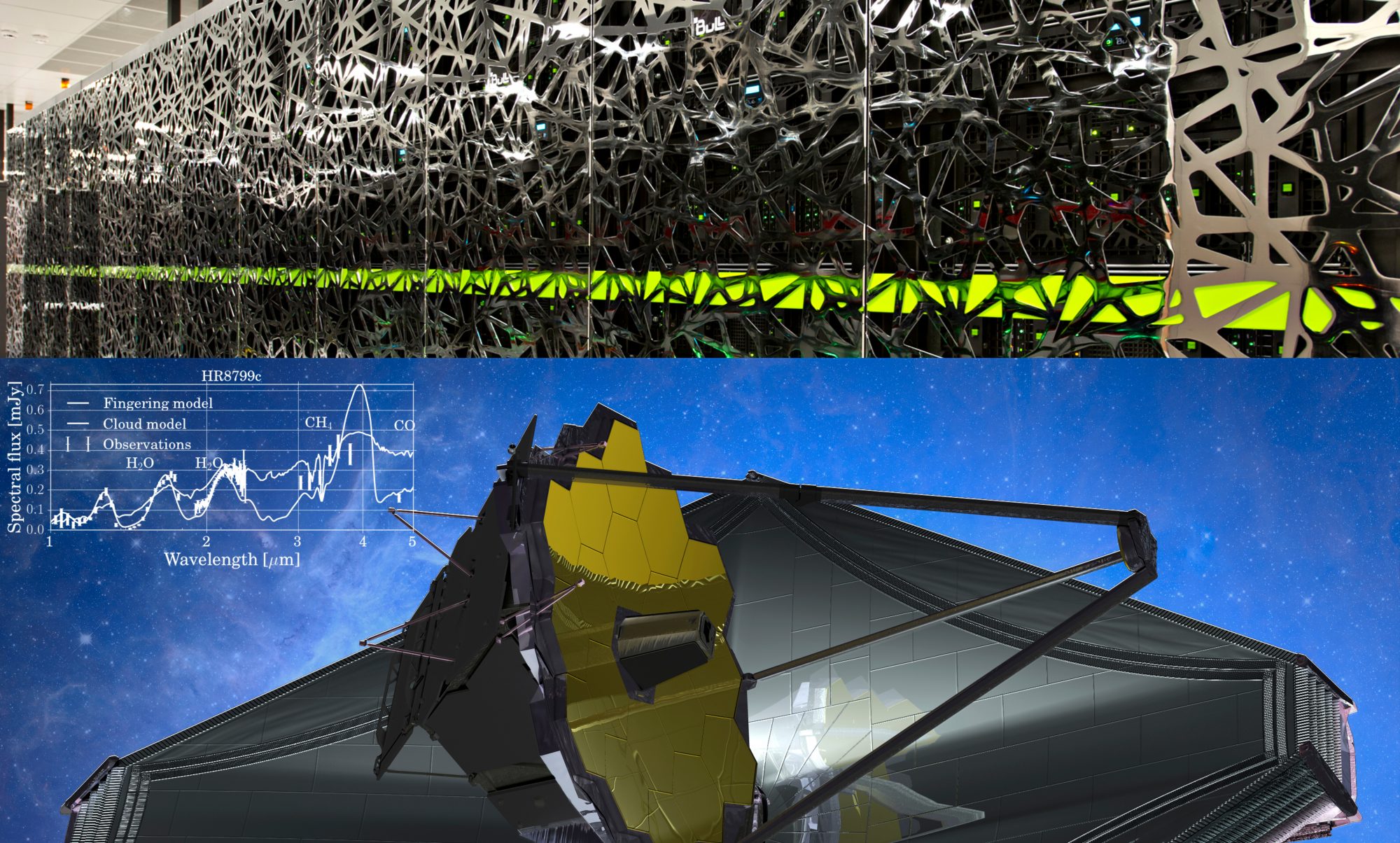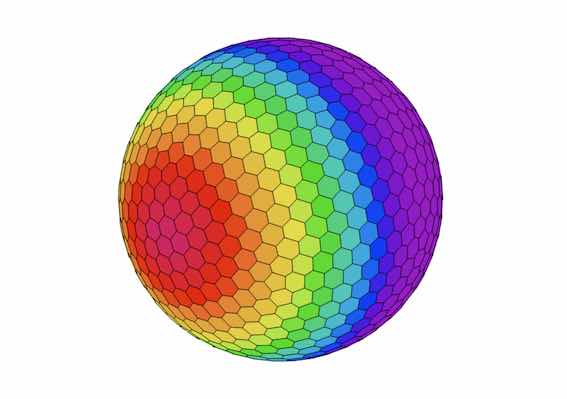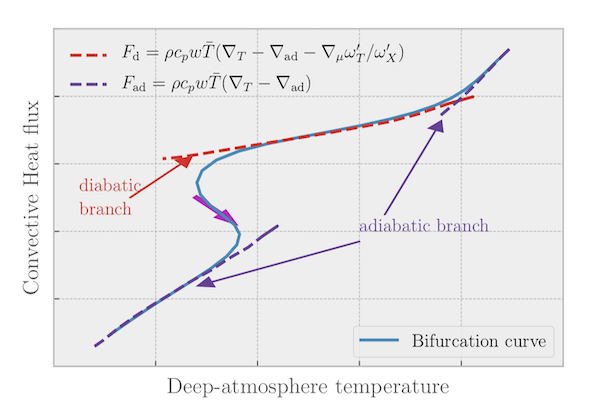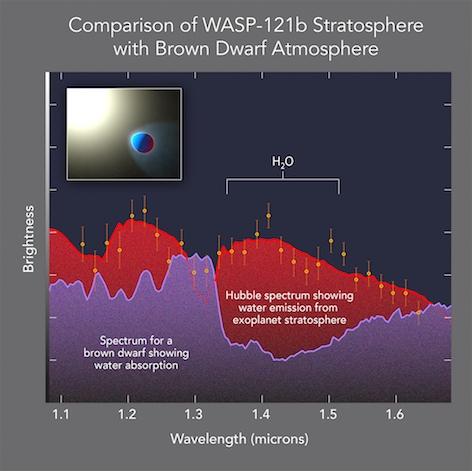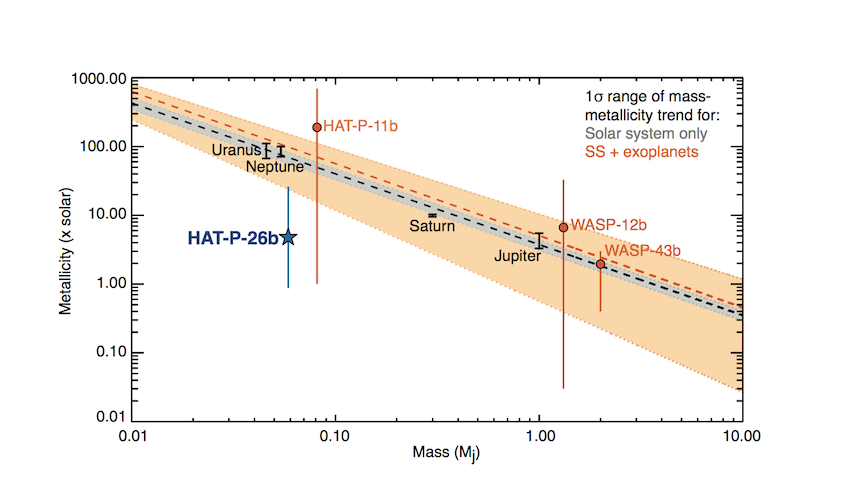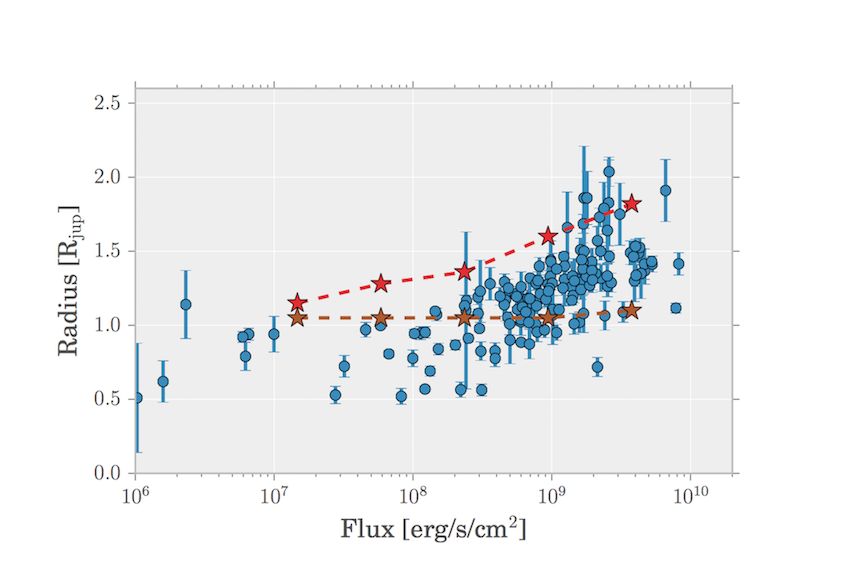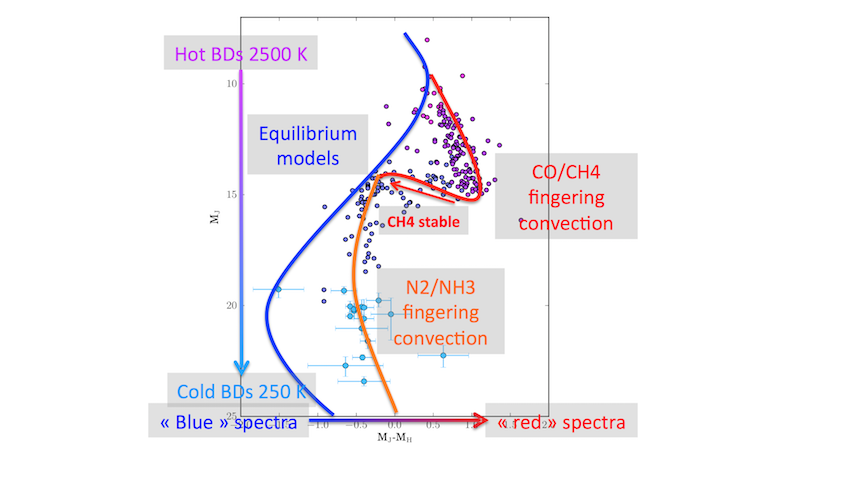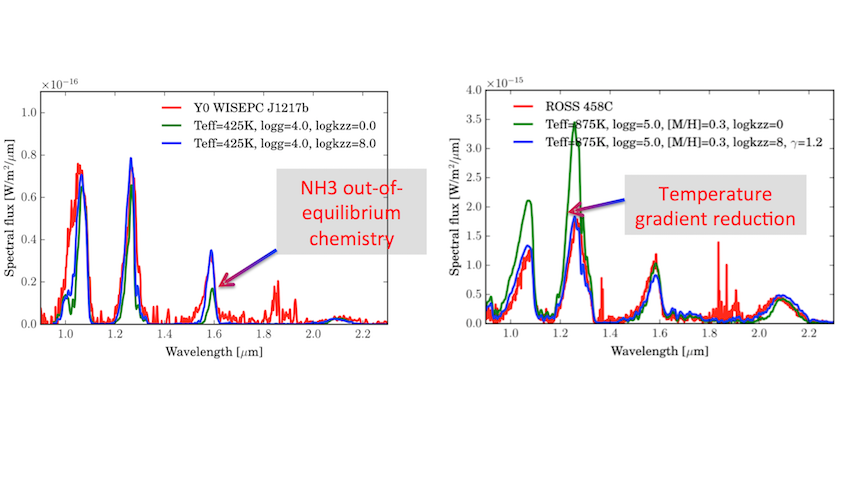By adapting the 3D general circulation model DYNAMICO developed at LSCE to the study of exoplanets, we have shown that the unexplained radius inflation of Hot Jupiters is the result of the long timescale meridional circulations that heat up the deep atmosphere. Thanks to the increased performances of the code and by using low resolutions (similarly to paleo-climate studies for Earth climate), simulations on a timescale of 1000 years (usual runs in the literature used a timescale of ~1 year) demonstrate that the deep circulations induced by the irradiation in the outer atmosphere are sufficient to confine the heat in the interior of the planet and keep it “puffy”. The full article detailing these simulations, and our analysis of the results, is available online as part of Issue 632 (December 2019) of Astronomy and Astrophysics.
A general theory for adiabatic and diabatic thermo-compositional convection
By generalizing the theory of convection to any type of thermal and compositional source terms (diabatic processes), we show that thermohaline convection in Earth oceans, fingering convection in stellar atmospheres, and moist convection in Earth atmosphere are deriving from the same general diabatic convective instability. We show also that ”radiative convection” triggered by CO/CH4 transition with radiative transfer in the atmospheres of brown dwarfs is analog to moist and thermohaline convection. We derive a generalization of the mixing length theory to include the effect of source terms in 1D codes. We show that CO/CH4 “radiative” convection could significantly reduce the temperature gradient in the atmospheres of brown dwarfs similarly to moist convection in Earth atmosphere thus possibly explaining the reddening in brown-dwarf spectra. By using idealized two-dimensional hydrodynamic simulations in the Ledoux unstable regime, we show that compositional source terms can indeed provoke a reduction of the temperature gradien. The L/T transition could be explained by a bifurcation between the adiabatic and diabatic convective transports and could be seen as a giant cooling crisis: an analog of the boiling crisis in liquid/steam-water convective flows.
This mechanism with other chemical transitions could be present in many giant and earth-like exoplanets. The study of the impact of different parameters (effective temperature, compositional changes) on CO/CH4 radiative convection and the analogy with Earth moist and thermohaline convection is opening the possibility to use brown dwarfs to better understand some aspects of the physics at play in the climate of our own planet.
Pre-ERC result: Hubble Detects Exoplanet with Glowing Water Atmosphere
Image © NASA, ESA, and A. Feild (STSci)
Exeter University Press release:
Scientists have found unmistakable evidence for a stratosphere on an enormous planet outside our solar system, with an atmosphere hot enough to boil iron.
An international team of researchers, led by the University of Exeter, made the new discovery by observing glowing water molecules in the atmosphere of the exoplanet WASP-121b with NASA’s Hubble Space Telescope.
In order to study the gas giant’s stratosphere – a layer of atmosphere where temperature increases with higher altitudes – scientists used spectroscopy to analyse how the planet’s brightness changed at different wavelengths of light. Water vapour in the planet’s atmosphere, for example, behaves in predictable ways in response to certain wavelengths of light, depending on the temperature of the water. At cooler temperatures, water vapour blocks light from beneath it. But at higher temperatures, the water molecules glow.
The phenomenon is similar to what happens with fireworks, which get their colours from chemicals emitting light. When metallic substances are heated and vaporized, their electrons move into higher energy states. Depending on the material, these electrons will emit light at specific wavelengths as they lose energy: sodium produces orange-yellow and strontium produces red in this process, for example.
The water molecules in the atmosphere of WASP-121b similarly give off radiation as they lose energy, but it is in the form of infrared light, which the human eye is unable to detect.
The research is published in leading scientific journal Nature. “A stratosphere in an ultra-hot gas giant exoplanet”.
Pre-ERC result: HAT-P-26b: A Neptune-mass exoplanet with a well-constrained heavy element abundance
A correlation between giant-planet mass and atmospheric heavy elemental abundance was first noted in the past century from observations of planets in our own Solar System and has served as a cornerstone of planet-formation theory. Using data from the Hubble and Spitzer Space Telescopes from 0.5 to 5 micrometers, we conducted in this Science paper, a detailed atmospheric study of the transiting Neptune-mass exoplanet HAT-P-26b. We detected prominent H2O absorption bands with a maximum base-to-peak amplitude of 525 parts per million in the transmission spectrum. Using the water abundance as a proxy for metallicity, we measured HAT-P-26b’s atmospheric heavy element content (4.8‑4.0+21.5 times solar). This likely indicates that HAT-P-26b’s atmosphere is primordial and obtained its gaseous envelope late in its disk lifetime, with little contamination from metal-rich planetesimals.
Pre-ERC result: Advection of potential temperature in the atmosphere of irradiated exoplanets: a robust mechanism to explain radius inflation
The anomalously large radii of strongly irradiated exoplanets have remained a major puzzle in astronomy. In this new ApJ paper, based on a 2D steady state atmospheric circulation model, the validity of which is assessed by comparison to 3D calculations, we reveal a new mechanism, namely the advection of the potential temperature due to mass and longitudinal momentum conservation, a process occuring in the Earth’s atmosphere or oceans. At depth, the vanishing heating flux forces the atmospheric structure to con- verge to a hotter adiabat than the one obtained with 1D calculations, implying a larger radius for the planet. Not only do the calculations reproduce the observed radius of HD209458b, but also the observed correlation between radius inflation and irradiation for transiting planets. Vertical advection of potential temperature induced by non uniform atmospheric heating thus provides a robust mechanism explaining the inflated radii of irradiated hot Jupiters.
Pre-ERC result: Cloudless atmospheres for L/T dwarfs and extra-solar giant planets
The admitted, conventional scenario to explain the complex spectral evolution of brown dwarfs (BDs) since their first detection 20 years ago has always been the key role played by micron-size condensates, called “dust” or “clouds,” in their atmosphere. This scenario, however, faces major problems, in particular the J-band brightening and the resurgence of FeH absorption at the L to T transition, and a physical first-principle understanding of this transition is lacking. In a Letter published in ApJL, we propose a new, completely different explanation for BD and extrasolar giant planet (EGP) spectral evolution, without the need to invoke clouds. We show that, due to the slowness of the CO/ CH4 and N2/NH3 chemical reactions, brown dwarf (L and T, respectively) and EGP atmospheres are subject to a thermo-chemical instability similar in nature to the fingering or chemical convective instability present in Earth oceans and at the Earth core/mantle boundary. The induced small-scale turbulent energy transport reduces the temperature gradient in the atmosphere, explaining the observed increase in near-infrared J–H and J–K colors of L dwarfs and hot EGPs, while a warming up of the deep atmosphere along the L to T transition, as the CO/CH4 instability vanishes, naturally solves the two aforementioned puzzles, and provides a physical explanation of the L to T transition. This new picture leads to a drastic revision of our understanding of BD and EGP atmospheres and their evolution.
Pre-ERC result: Cloudless atmospheres for cold brown dwarfs
In a letter published in ApJL, we improve the current understanding of the atmospheres of brown dwarfs, especially cold ones with spectral types T and Y, whose modeling is a current challenge. Silicate and iron clouds are believed to disappear at the photosphere at the L/T transition, but cloudless models fail to reproduce correctly the spectra of T dwarfs, advocating for the addition of more physics, e.g., other types of clouds or internal energy transport mechanisms. We use a one-dimensional radiative/convective equilibrium code ATMO to investigate this issue. This code includes both equilibrium and out-of-equilibrium chemistry and solves consistently the PT structure. Included opacity sources are H2-H2, H2-He, H2O, CO, CO2, CH4, NH3, K, Na, and TiO, VO if they are present in the atmosphere. We show that the spectra of Y dwarfs can be accurately reproduced with a cloudless model if vertical mixing and NH3 quenching are taken into account. T dwarf spectra still have some reddening in, e.g., J–H, compared to cloudless models. This reddening can be reproduced by slightly reducing the temperature gradient in the atmosphere. We propose that this reduction of the stabilizing temperature gradient in these layers, leading to cooler structures, is due to the onset of fingering convection, triggered by the destabilizing impact of condensation of very thin dust.
